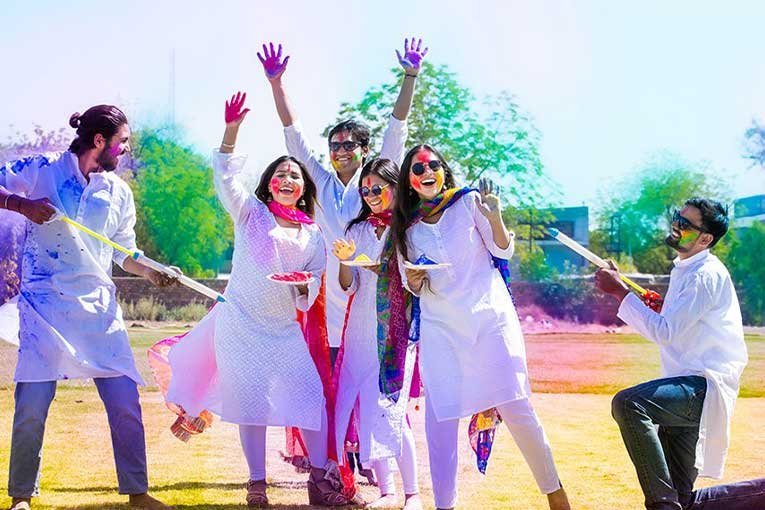The Cultural Significance of Holi
Holi, the vibrant and joyous festival celebrated by Hindus around the world, is a testament to the power of unity, friendship, and inclusivity. Known as the Festival of Colors, Holi marks the arrival of spring and the victory of good over evil. It is a time for people to come together, let go of past grievances, and embrace new beginnings.
In addition to its religious significance, Holi holds a universal appeal that transcends cultural boundaries. The festival’s core values of joy, friendship, and togetherness resonate with people from all walks of life, regardless of their background or beliefs. This inclusivity has helped Holi become a global phenomenon, celebrated by individuals of various cultures and nationalities.
Celebration and Joy
At the heart of Holi celebrations is the spirit of joy and merriment. The festival is marked by lively gatherings, music, dance, and, of course, the iconic ritual of throwing colored powders and water at each other. These colorful festivities create a sense of exhilaration and freedom, allowing people to let loose and embrace the playful side of life.
The act of smearing colors on friends and strangers alike symbolizes the breaking down of barriers and the fostering of camaraderie. In the midst of the colorful chaos, differences in age, gender, social status, and nationality fade away, leaving behind a sense of unity and shared happiness. This sense of celebration and joy is infectious, spreading from one person to another and creating a bond that transcends language and cultural differences.
Color and Symbolism
The vibrant hues of Holi hold deep symbolic significance, representing the diversity and beauty of life itself. The rainbow of colors used during the festival reflects the kaleidoscope of human emotions and experiences, reminding us of the richness and variety present in the world. By dousing each other in colors, people not only express their joy and playfulness but also acknowledge the beauty of diversity and individuality.
The colorful nature of Holi serves as a visual metaphor for the idea that true beauty lies in embracing differences and celebrating uniqueness. Through the shared experience of splashing colors on one another, people forge connections and create memories that transcend cultural boundaries. The act of coloring each other also serves as a form of self-expression, allowing individuals to break free from societal norms and express themselves authentically.
Togetherness and Unity
Holi promotes a sense of togetherness and unity that is essential for fostering friendships and building strong communities. The act of celebrating together, sharing meals, and engaging in playful activities creates a bond that transcends superficial differences and connects people at a deeper level. This sense of unity and solidarity is a powerful force that can bridge cultural divides and promote understanding and empathy.
The festival of Holi exemplifies the idea that true friendship knows no boundaries. Whether it is through sharing sweets, exchanging gifts, or dancing together, Holi encourages people to reach out to one another and build bridges of friendship. This spirit of camaraderie and inclusivity is what makes Holi a truly universal celebration, capable of bringing people from diverse backgrounds together in a spirit of love and goodwill.
Holi is more than just a festival of colors; it is a celebration of joy, friendship, and unity that transcends cultural boundaries. By embracing the universal themes of celebration, color, and togetherness, Holi promotes goodwill and harmony among diverse communities worldwide. As we immerse ourselves in the colorful festivities of Holi, let us remember the power of this festival to unite us in joy and friendship, regardless of our differences.







